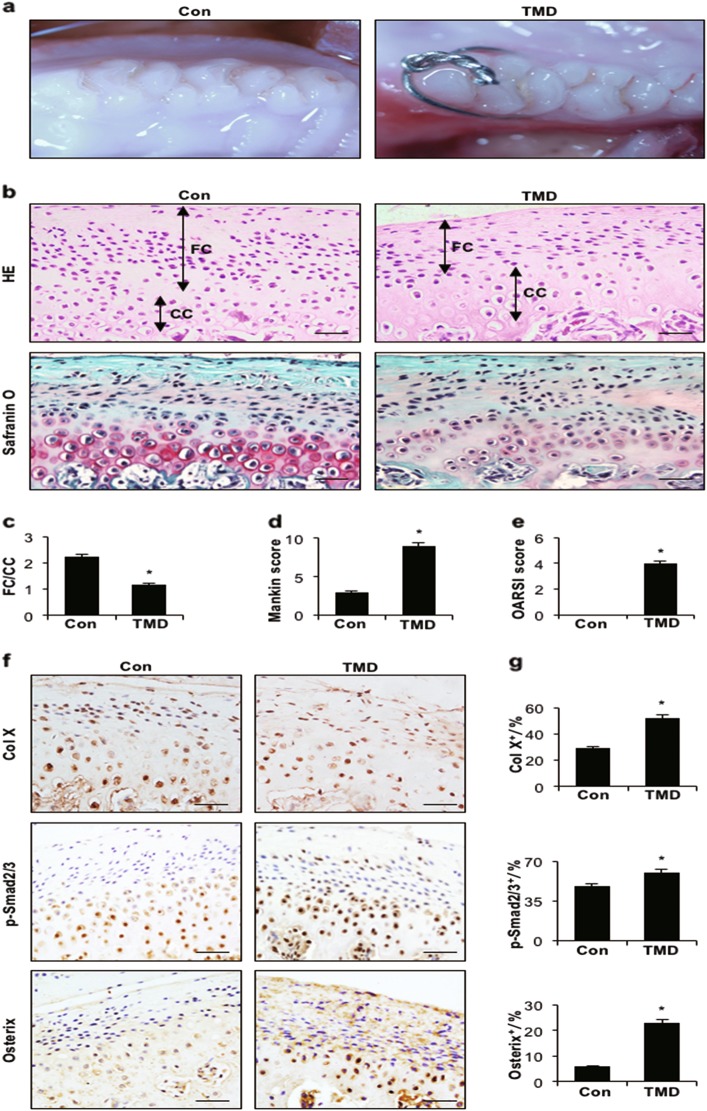Fig. 1.
Abnormal occlusion leads to cartilage degeneration in the temporomandibular joint. a Representative images of the first molar occlusion relationship in control and TMD rats. b HE (top) and Safranin O and fast green (bottom) staining analyses of glycosaminoglycan (red) in sagittal sections of the temporomandibular joint and mandibular condylar cartilage layers (FC fibrocartilage layer, CC: calcified cartilage layer). c FC/CC, d Mankin and e OARSI scores of control and TMD rats. f Immunohistochemical analyses of Col X, p-Smad2/3 and Osterix (brown) in the condylar cartilage. g Col X-, p-Smad2/3- and Osterix-positive cells (brown) were counted in the cartilage layer. Scale bars = 20 µm. n = 6 per group. *P < 0.05, one-way ANOVA followed by Tukey’s test. All data are expressed as the mean ± s.d

